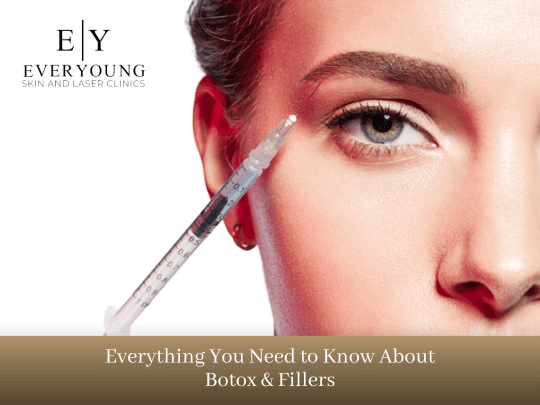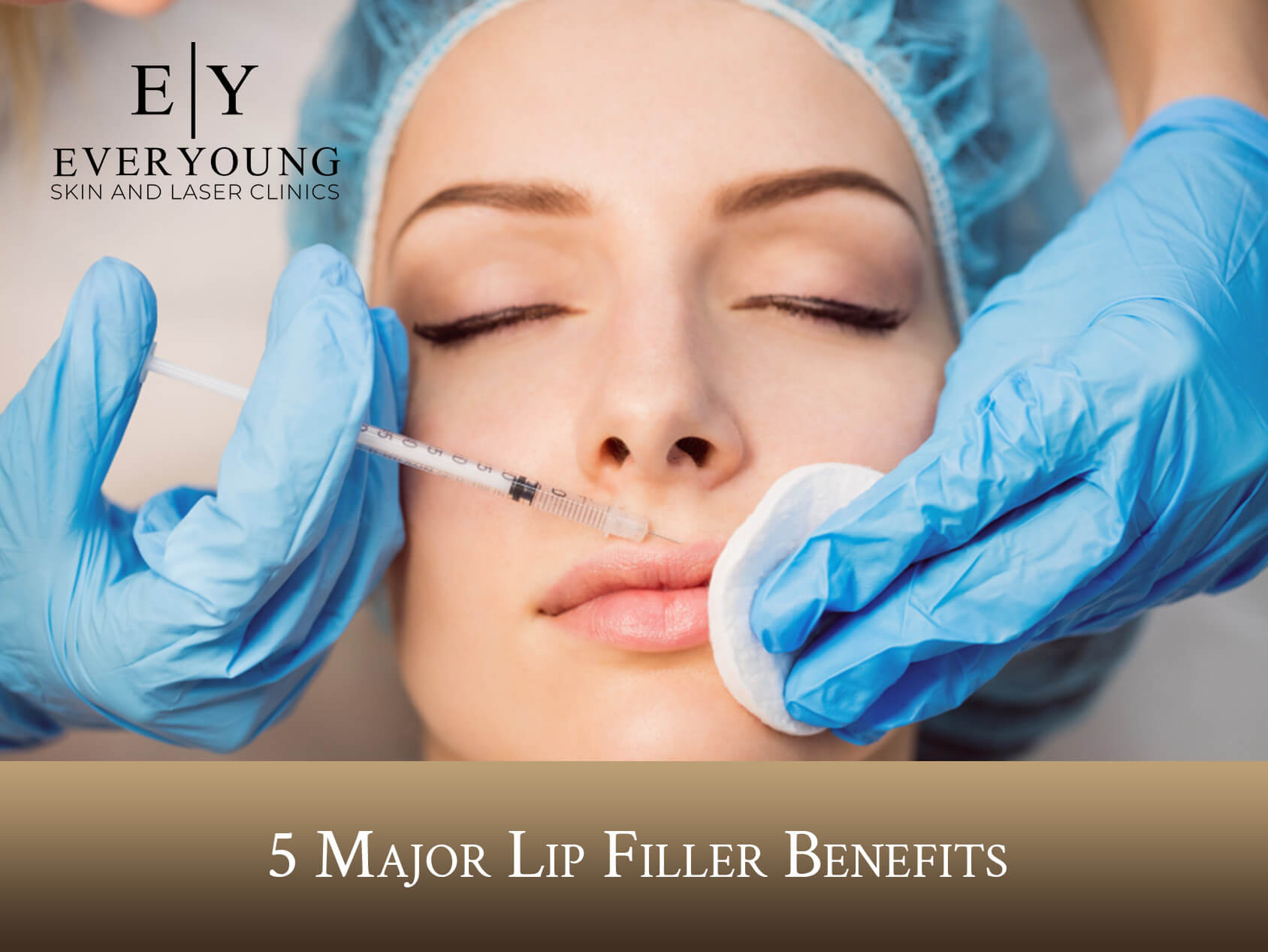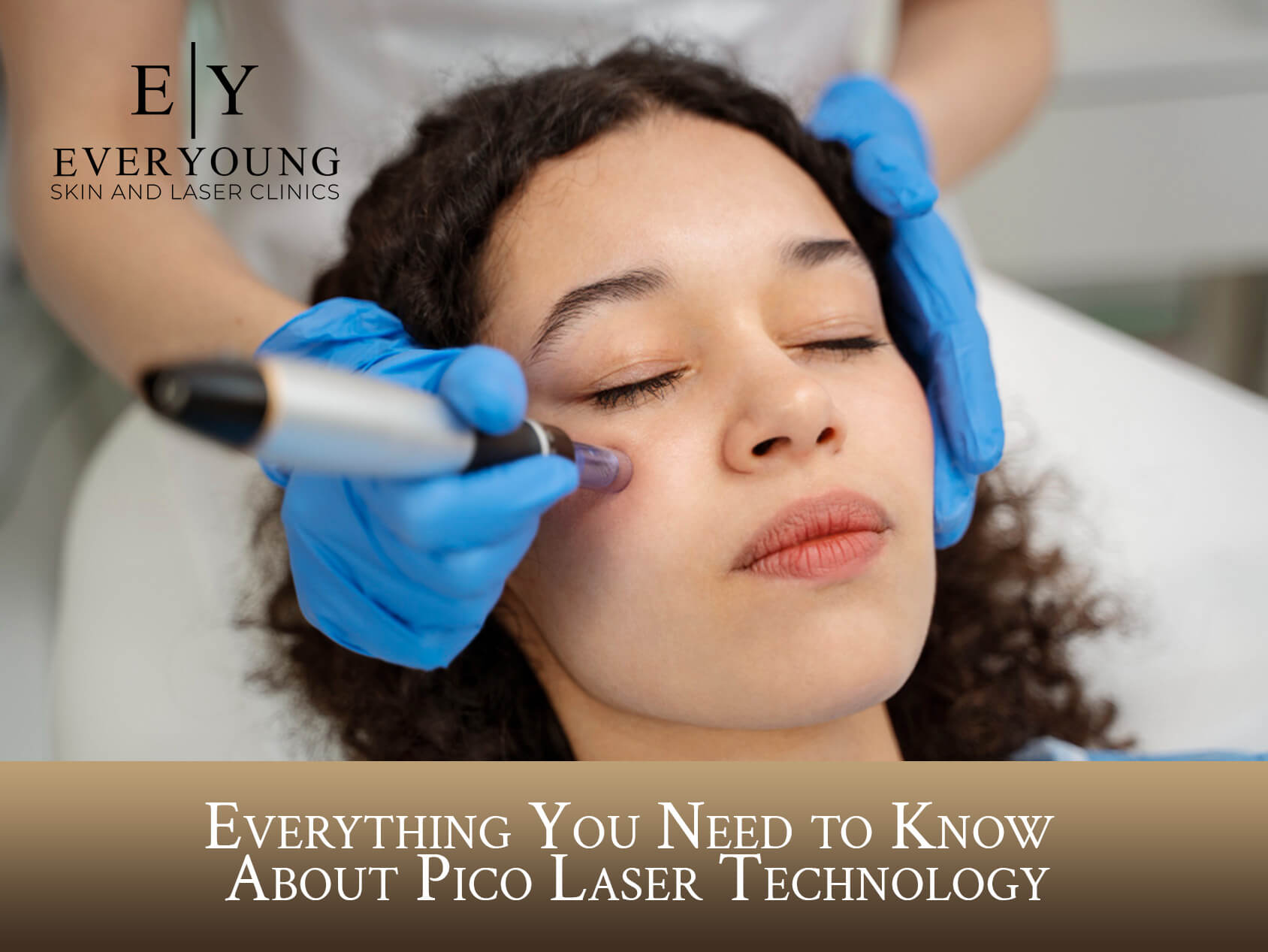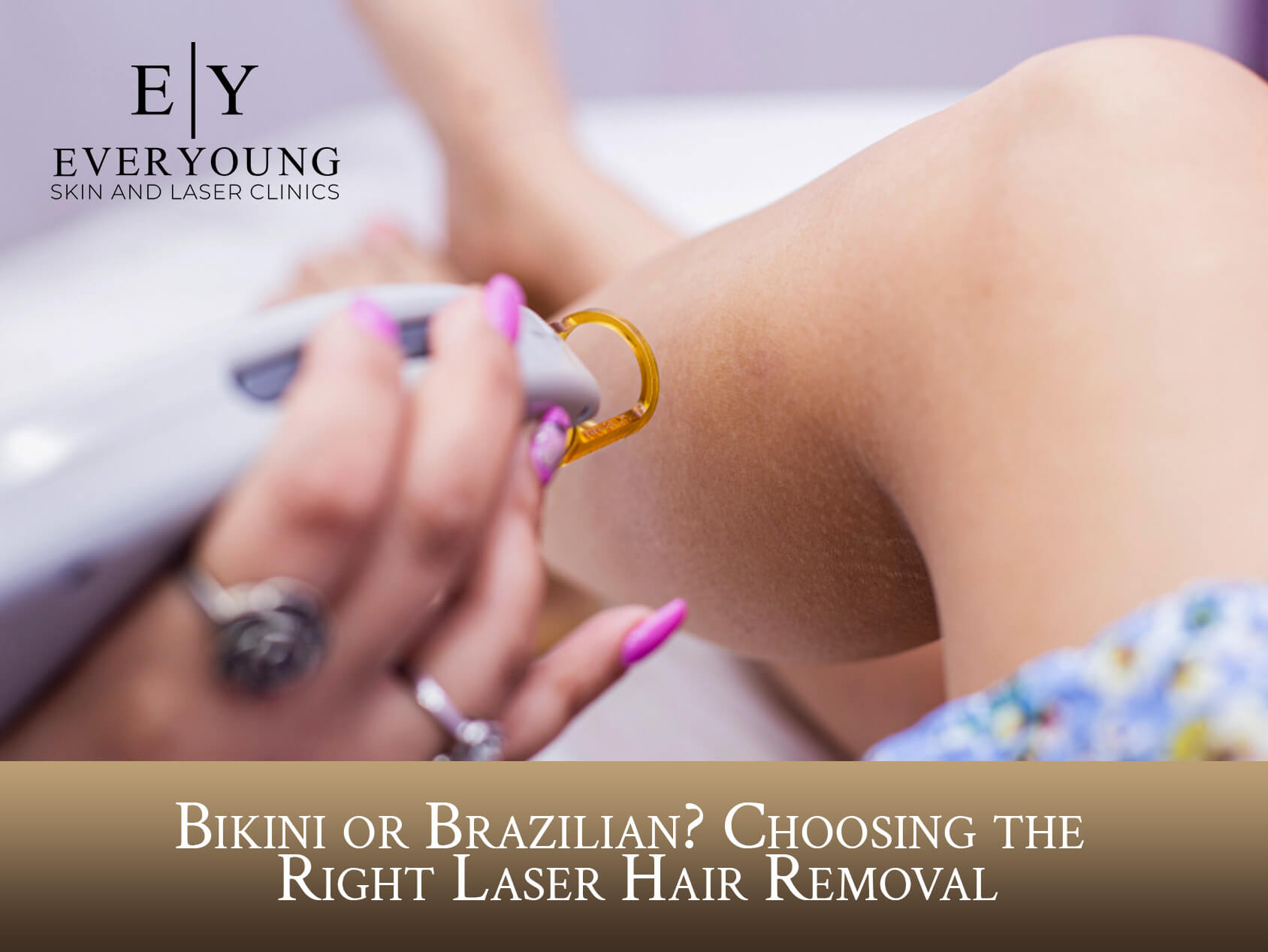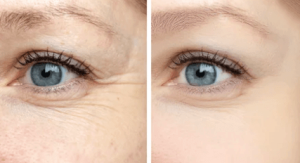 Do you want a fresh, more youthful-looking face? Cosmetic procedures that aim to smooth out fine lines and wrinkles are becoming increasingly popular. They can make you appear more vibrant and feel more confident in your skin. However, many people are not willing to undergo surgery, with the risks and downtime involved, which is why procedures like Botox and dermal fillers are a favoured option for many. Both Botox and fillers involve injectables that help smooth out unwanted lines that are the result of aging. But what’s the difference between the two? If you’re considering having a cosmetic procedure done soon, it’s important to be well-informed. In this post, we will go into detail about Botox and dermal fillers for everything you need to know so you can make the right choice for your individual needs.
Do you want a fresh, more youthful-looking face? Cosmetic procedures that aim to smooth out fine lines and wrinkles are becoming increasingly popular. They can make you appear more vibrant and feel more confident in your skin. However, many people are not willing to undergo surgery, with the risks and downtime involved, which is why procedures like Botox and dermal fillers are a favoured option for many. Both Botox and fillers involve injectables that help smooth out unwanted lines that are the result of aging. But what’s the difference between the two? If you’re considering having a cosmetic procedure done soon, it’s important to be well-informed. In this post, we will go into detail about Botox and dermal fillers for everything you need to know so you can make the right choice for your individual needs.
What is Botox?
Botox is the brand name for a type of botulinum toxin injection. Botulinum toxins are neurotoxins, and the toxins in Botox are made by the bacterium Clostridium botulinum. This is the same toxin that can cause the life-threatening type of food poisoning known as botulism. While this might sound scary, Botox is safe when administered in small doses, in its purified form, by an experienced medical professional. Doctors have been using Botox for years to smooth fine lines and wrinkles, creating a more youthful appearance. Botox can also be used to treat certain medical conditions, such as migraines, jaw pain, and hyperhidrosis, among others. There are other types of botulinum toxin injections, but Botox is the most commonly known and used.
How does Botox work?
When the botulinum toxin is injected, it blocks certain nerve signals that make muscles contract. As a result, the injected muscles are temporarily paralyzed, and they can no longer contract and tense up, resulting in a smoother, more youthful appearance. Botox can be used on any area with unwanted lines and wrinkles, such as forehead lines, crow’s feet, or lines around the chin and mouth.
Botox Treatment
A typical Botox treatment will only take 10-30 minutes, depending on the individual and size of the area to be treated. Since Botox is a non-surgical, non-invasive procedure, you won’t need any recovery time and can return home and to work right away. Be sure to ask your doctor about any aftercare. You can expect to see the results from your Botox right away! Most patients see results within a day or two. The results from Botox are not permanent, typically lasting around six months.
What are some health conditions that can be treated with Botox?
Since Botox injections block certain chemical signals from the nerves that cause the muscles to contract, it can be used to ease the symptoms of certain medical conditions such as:
- Migraines – For those suffering from chronic migraines, the condition can be debilitating. Botox injections block the nerve signals that control muscle activity, and the result is the blocking of the chemicals involved in pain transmission. Botox can help reduce the frequency of migraines.
- Jaw pain – Botox can help with managing jaw pain, including temporomandibular joint (TMJ) disorder, a condition where the joints connecting the lower jaw to the skull are not aligned and synchronized.
- Hyperhidrosis (excessive sweating) – Botox injections placed near the sweat glands will paralyze the nerve signals responsible for producing too much sweat.
- Neck spasms (and other muscle spasms) – When the neck or other muscles contract and twitch in an uncontrolled way, the result can be quite painful for those afflicted. The use of Botox in the affected area will help soften these contractions.
- Bladder Problems – Botox injections can help reduce urinary incontinence.
What are dermal fillers?
 Like Botox, dermal fillers use injections to smooth out unwanted lines while also adding volume and plumpness to the skin. Fillers contain hyaluronic acid, which is a gel-like substance that naturally occurs in the body. Hyaluronic acid helps to keep the skin supple, resilient, and hydrated. A medical professional will inject the substance directly under the skin to sculpt the desired area. Fillers add volume to the skin, thereby smoothing out any fine lines and wrinkles while improving the appearance of sagging skin. Dermal fillers are sometimes known as “injectable implants” because of their ability to lift the area and enhance your facial features. Fillers are fully customizable, meaning that you can choose the amount of volume to be added.
Like Botox, dermal fillers use injections to smooth out unwanted lines while also adding volume and plumpness to the skin. Fillers contain hyaluronic acid, which is a gel-like substance that naturally occurs in the body. Hyaluronic acid helps to keep the skin supple, resilient, and hydrated. A medical professional will inject the substance directly under the skin to sculpt the desired area. Fillers add volume to the skin, thereby smoothing out any fine lines and wrinkles while improving the appearance of sagging skin. Dermal fillers are sometimes known as “injectable implants” because of their ability to lift the area and enhance your facial features. Fillers are fully customizable, meaning that you can choose the amount of volume to be added.
On which areas of the face can dermal fillers be used?
Fillers are best used on any area of the face where aging has caused the skin to hollow or sag. Lips are one of the most common areas for dermal fillers. Over time, our lips tend to thin out and develop vertical lines. Fillers will give the area a natural-looking plumpness while evening out the texture of the lips. The cheeks, jawline, nose, forehead, and under-eye are other areas where dermal fillers are popular. These areas can appear hollowed out as we age. Fillers are a great way to subtly sculpt the face and address any asymmetries in the desired area without the use of surgery.
Dermal Filler Treatment
During a dermal filler treatment, you will receive a series of injections to the desired area. A typical treatment takes about 30 minutes, and you should see results right away. You won’t need any downtime after receiving dermal fillers, so you can immediately return to your regular activities. That being said, try not to touch or rub the area and refrain from strenuous activity and exercise for at least 24-48 hours following your treatment to ensure you don’t move your fillers out of place. Talk to your doctor and follow all post-treatment instructions. The results from a filler treatment are not permanent but should last from six months to a year or more, depending on the individual.
What is the difference between Botox and dermal fillers?
Since Botox and fillers are so similar in a lot of ways, it can be easy to confuse the two. They both are non-surgical cosmetic procedures that use a series of injections to treat the area for a younger, more sculpted appearance. The biggest difference between Botox and fillers is that Botox works to reduce fine lines and wrinkles by paralyzing the underlying muscles so that they can no longer contract. Fillers use hyaluronic acid to fill in the lines and wrinkles, making the area appear smoother while adding volume and plumpness to the area.
Risks
Botox and dermal fillers are non-surgical, non-invasive procedures, and the risks involved are minimal. With both treatments, you can expect to see a small amount of swelling, bruising, and a bit of soreness immediately afterward. Leading up to your procedure, avoid taking any blood-thinning medications, such as ibuprofen or aspirin, as these may increase your chances of bruising or bleeding. Also, avoid alcohol immediately before and after your procedure, as it tends to have an inflammatory effect. Talk to your doctor about any medications you are currently taking and ask about any risks or side effects involved. You should be able to return to work and your regular activities right away.
Which option is best for me?
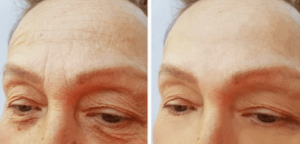 Now that you know the difference between Botox and fillers and how each of them works, you may still be wondering which option is best. Here are a few things to keep in mind when choosing a treatment:
Now that you know the difference between Botox and fillers and how each of them works, you may still be wondering which option is best. Here are a few things to keep in mind when choosing a treatment:
- Botox is best for addressing dynamic lines on the face. These are the lines that are caused by your facial expressions. For example, smiling, frowning, and squinting can all cause dynamic lines to form over time.
- Botox can also be used as a preventative treatment, making it a great option for younger patients. Botox may not completely get rid of very deep lines and wrinkles.
- Dermal fillers are best for addressing static lines and issues with volumes, such as sagging skin, hollow areas, or folds and creases on the face. This can include trouble areas such as the under eyes, cheeks, and jawline. Fillers are recommended for deep lines that are present all the time.
- Consider the phrase: “Lines of expression need Botox. Lines at rest need fillers.”
- Remember that you can get a combination of both Botox and fillers. You don’t always need to choose between one or the other!
- Talk to your healthcare provider about the areas you’d like to sculpt and smooth. They can help recommend which treatment is best for the work you’d like to receive.
Botox and dermal fillers are some of the most popular cosmetic procedures today. If you’re considering either procedure, it’s important to know how they work and which issues they address. While there are a lot of similarities between both Botox and fillers, there are also a few key differences that will affect which treatment is the right one for you. Injectables should only ever be administered by an experienced, licensed medical professional. If you still have any questions or concerns, don’t hesitate to book a consultation with EverYoung Skin and Laser Clinic. Our skilled, highly trained team is passionate about working with individuals to achieve their aesthetic goals. We want you to look and feel your best!



